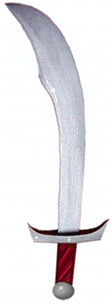...Best of Sicily presents... Best of Sicily Magazine. ... Dedicated to Sicilian art, culture, history, people, places and all things Sicilian. |
by Vincenzo Salerno | ||
Magazine Index Best of Sicily Arts & Culture Fashion Food & Wine History & Society About Us Travel Faqs Contact Map of Sicily |
The young man, soon known as Abul Hussain Jawhar bin Abdullah, or al-Katib, was taken to Tunisia, the original homeland of Sicily's Aghlabids and Kalbids. The caliph Ismail al-Mansur took the intelligent Jawhar under his tutelage. Ismail's son and heir, al-Muizz (953-975), freed Jawhar and made him his scribe. From this rather humble rank he eventually became a military adviser and, finally, a visir, a kind of Fatimid general. With the allied Zirids, the Fatimids under Jawhar conquered Moroccan lands to the west, expanding to Fez and then the Atlandic coast. Cordoba's Umayyads retained control of the important centers of Sabtah (Ceuta), birthplace of Abdullah al Idrisi, and Tangier. In principle, Koranic teaching forbade Muslim to fight Muslim, but in the Middle Ages this precept was occasionally violated. Jawhar later led the Fatimid expansion eastward toward Egypt, defeating the Ishidids at Giza and occupying lands around the Nile valley. He administered Egypt until 972 on behalf of the Fatimids. He founded Al-Qahira (Cairo) on the site of a small village in 969, and it became a magnificent and monumental city. This was to be the seat of the Fatimid caliphate, and in time it surpassed Baghdad as the most important Muslim-Arab city, a pre-eminence it enjoys to this day. In 970 the al-Azhar mosque was built. The Islamic university connected with this mosque is considered the oldest continuously-operating university in the world, and regarded as the centre of Sunni Muslim learning. Certain Norman-Arab monuments in Sicily reflect distinctly Fatimid architectural influences. The Zisa palace is a particular example. Attempts to annex Syria and Palestine to the Fatimid empire did not succeed, but Egypt's southern borders were protected by a treaty with the Christian Nubians, whose territory bordering the Red Sea separated southern Egypt and northern Ethiopia. Though Jawhar's friendship with al-Muizz eventually suffered, he found something of his former glory at the court of al-Aziz (975-996), the successor of al-Muizz. Thus the Sicilian regained some of his former prominence until 979, when another military defeat by the Syrians determined his ultimate reputation. Jawhar died in 992. He may be little more than an interesting footnote to Fatimid history, but a few of his writings survive, and his legacy is not forgotten. About the Author: Palermo native Vincenzo Salerno has written biographies of several famous Sicilians, including Frederick II and Giuseppe di Lampedusa. | |
Top of Page |
 Jawhar as-Siqilli ("the Sicilian"), founder of the Fatimid city of Cairo, was a tenth-century Muslim military leader born in western
Sicily, probably around 910. Little is known of his early life except that
he was a Christian sold into slavery in youth. Historians have speculated
that he converted to Islam while young, perhaps with his father. The exact
circumstances of his enslavement are unknown; most of Sicily's "
Jawhar as-Siqilli ("the Sicilian"), founder of the Fatimid city of Cairo, was a tenth-century Muslim military leader born in western
Sicily, probably around 910. Little is known of his early life except that
he was a Christian sold into slavery in youth. Historians have speculated
that he converted to Islam while young, perhaps with his father. The exact
circumstances of his enslavement are unknown; most of Sicily's "